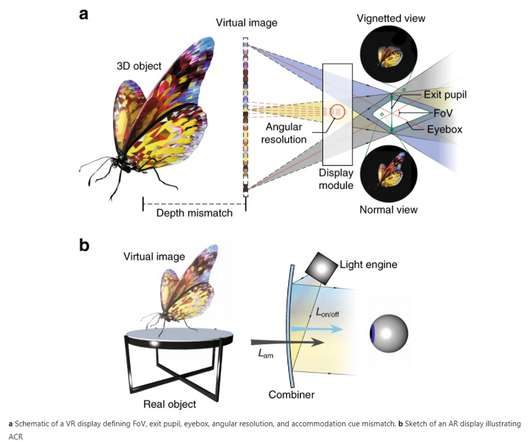Augmented Reality (AR) and Virtual Reality (VR) Displays: Emerging Technologies and Future…
ARVR
DECEMBER 7, 2021
Note: This article is a short summary of the article in the reference section. In the 1990s, AR/VR experienced the first boom, which quickly subsided due to the lack of eligible hardware and digital content. Emerging technologies like holography and lithography have greatly reshaped the AR/VR display systems. Hsiang, EL.,











Let's personalize your content